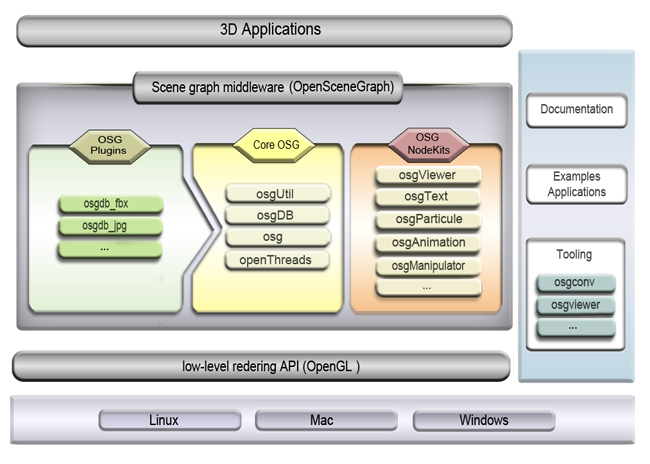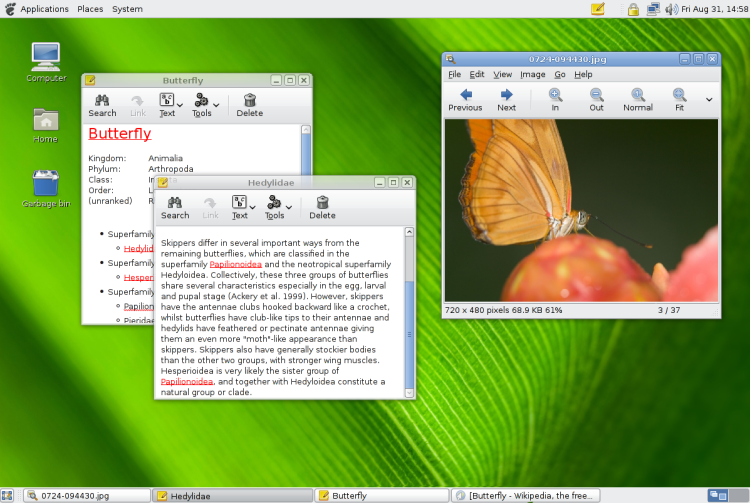|
Retained Mode
Retained mode in computer graphics is a major pattern of API design in graphics libraries, in which * the graphics library, instead of the client, retains the scene (complete object model of the rendering primitives) to be rendered and * the client calls into the graphics library do not directly cause actual rendering, but make use of extensive indirection to resources, managed thus ''retained'' by the graphics library. It does not preclude the use of double-buffering. Immediate mode is an alternative approach. Historically, retained mode has been the dominant style in GUI libraries; however, both can coexist in the same library and are not necessarily exclusionary in practice. Overview In retained mode the client calls do not directly cause actual rendering, but instead update an abstract internal model (typically a list of objects) which is maintained within the library's data space. This allows the library to optimize when actual rendering takes place along wit ... [...More Info...] [...Related Items...] OR: [Wikipedia] [Google] [Baidu] |
Application Programming Interface
An application programming interface (API) is a connection between computers or between computer programs. It is a type of software Interface (computing), interface, offering a service to other pieces of software. A document or standard that describes how to build such a connection or interface is called an ''API specification''. A computer system that meets this standard is said to ''implement'' or ''expose'' an API. The term API may refer either to the specification or to the implementation. In contrast to a user interface, which connects a computer to a person, an application programming interface connects computers or pieces of software to each other. It is not intended to be used directly by a person (the end user) other than a computer programmer who is incorporating it into software. An API is often made up of different parts which act as tools or services that are available to the programmer. A program or a programmer that uses one of these parts is said to ''call'' that ... [...More Info...] [...Related Items...] OR: [Wikipedia] [Google] [Baidu] |
Z-buffering
A z-buffer, also known as a depth buffer, is a type of data buffer used in computer graphics to store the depth information of fragments. The values stored represent the distance to the camera, with 0 being the closest. The encoding scheme may be flipped with the highest number being the value closest to camera. In a 3D-rendering pipeline, when an object is projected on the screen, the depth (z-value) of a generated fragment in the projected screen image is compared to the value already stored in the buffer (depth test), and replaces it if the new value is closer. It works in tandem with the rasterizer, which computes the colored values. The fragment output by the rasterizer is saved if it is not overlapped by another fragment. Z-buffering is a technique used in almost all contemporary computers, laptops, and mobile phones for generating 3D computer graphics. The primary use now is for video games, which require fast and accurate processing of 3D scenes. Usage Occlusion ... [...More Info...] [...Related Items...] OR: [Wikipedia] [Google] [Baidu] |
Scene Graph
A scene graph is a general data structure commonly used by vector-based graphics editing applications and modern computer games, which arranges the logical and often spatial representation of a graphical scene. It is a collection of nodes in a graph or tree structure. A tree node may have many children but only a single parent, with the effect of a parent applied to all its child nodes; an operation performed on a group automatically propagates its effect to all of its members. In many programs, associating a geometrical transformation matrix (see also transformation and matrix) at each group level and concatenating such matrices together is an efficient and natural way to process such operations. A common feature, for instance, is the ability to group related shapes and objects into a compound object that can then be manipulated as easily as a single object. Scene graphs in graphics editing tools In vector-based graphics editing, each leaf node in a scene graph represents some ... [...More Info...] [...Related Items...] OR: [Wikipedia] [Google] [Baidu] |
Compositing Window Manager
A compositing manager, or compositor, is software that provides applications with an off-screen data buffer, buffer for each window, then Compositing, composites these window buffers into an image representing the screen and writes the result into the display memory. A compositing window manager is a window manager that is also a compositing manager. Compositing managers may perform additional processing on buffered windows, applying 2D computer graphics, 2D and 3D computer graphics, 3D animated effects such as Alpha blending, blending, Dissolve (filmmaking), fading, Image scaling, scaling, Rotation (mathematics), rotation, Multi-monitor#Clone mode, duplication, bending and contortion, shuffling, Gaussian blur, blurring, redirecting applications, and Translation (geometry), translating windows into one of a number of Display device, displays and virtual desktops. Computer graphics technology allows for visual effects to be rendered in real time such as drop shadows, live previews, ... [...More Info...] [...Related Items...] OR: [Wikipedia] [Google] [Baidu] |
PHIGS
PHIGS (Programmer's Hierarchical Interactive Graphics System) is an application programming interface (API) standard for rendering 3D computer graphics, considered to be the 3D graphics standard for the 1980s through the early 1990s. Subsequently, a combination of features and power led to the rise of OpenGL, which became the most popular professional 3D API of the mid to late 1990s. Large vendors typically offered versions of PHIGS for their platforms, including DEC PHIGS, IBM's graPHIGS and Sun's SunPHIGS. It could also be used within the X Window System, supported via PEX. PEX consisted of an extension to X, adding commands that would be forwarded from the X server to the PEX system for rendering. Workstations were placed in windows typically, but could also be forwarded to take over the whole screen, or to various printer-output devices. PHIGS was designed in the 1980s, inheriting many of its ideas from the 2D Graphical Kernel System (GKS) of the late 1970s, and became a stan ... [...More Info...] [...Related Items...] OR: [Wikipedia] [Google] [Baidu] |
SceneKit
SceneKit, sometimes rendered Scene Kit, is a 3D graphics application programming interface (API) for Apple Inc. platforms written in Objective-C. It is a high-level framework designed to provide an easy-to-use layer over the lower level APIs like OpenGL and Metal (API), Metal. SceneKit maintains an object oriented, object based scene graph, along with a physics engine, particle system, and links to Core Animation and other frameworks to easily animate that display. SceneKit views can be mixed with other views, for instance, allowing a SpriteKit 2D display to be mapped onto the surface of an object in SceneKit, or a UIBezierPath from Core Graphics to define the geometry of a SceneKit object. SceneKit also supports import and export of 3D scenes using the COLLADA format. SceneKit was first released for macOS in 2012, and iOS in 2014. Basic concepts SceneKit maintains a scene graph based on a root object, an instance of the class SCNScene. The SCNScene object is roughly equivalent to ... [...More Info...] [...Related Items...] OR: [Wikipedia] [Google] [Baidu] |
Windows Presentation Foundation
Windows Presentation Foundation (WPF) is a free and open-source user interface framework for Windows-based desktop applications. WPF applications are based in .NET, and are primarily developed using C# and XAML. Originally developed by Microsoft, WPF was initially released as part of .NET Framework 3.0 in 2006. In 2018, Microsoft released WPF as open source under the MIT License. WPF's design and its layout language XAML have been adopted by multiple other UI frameworks, such as UWP, .NET MAUI, and Avalonia. Overview WPF employs XAML, an XML-based language, to define and link various interface elements, and uses C# to define program behavior. WPF applications are deployed as standalone desktop programs. WPF supports a number of common user interface elements, such as 2D/3D rendering, fixed and adaptive documents, typography, vector graphics, runtime animation, and pre-rendered media. These elements can then be linked and manipulated based on various events, user interact ... [...More Info...] [...Related Items...] OR: [Wikipedia] [Google] [Baidu] |
Shader
In computer graphics, a shader is a computer program that calculates the appropriate levels of light, darkness, and color during the rendering of a 3D scene—a process known as '' shading''. Shaders have evolved to perform a variety of specialized functions in computer graphics special effects and video post-processing, as well as general-purpose computing on graphics processing units. Traditional shaders calculate rendering effects on graphics hardware with a high degree of flexibility. Most shaders are coded for (and run on) a graphics processing unit (GPU), though this is not a strict requirement. ''Shading languages'' are used to program the GPU's rendering pipeline, which has mostly superseded the fixed-function pipeline of the past that only allowed for common geometry transforming and pixel-shading functions; with shaders, customized effects can be used. The position and color ( hue, saturation, brightness, and contrast) of all pixels, vertices, and/or ... [...More Info...] [...Related Items...] OR: [Wikipedia] [Google] [Baidu] |
Index Buffer
This is a glossary of terms relating to computer graphics. For more general computer hardware terms, see glossary of computer hardware terms. 0–9 A B C D E F G H I K L M N O P Q R S T ... [...More Info...] [...Related Items...] OR: [Wikipedia] [Google] [Baidu] |
Vertex Buffer Object
A vertex buffer object (VBO) is an OpenGL feature that provides methods for uploading vertex data (position, normal vector, color, etc.) to the video device for non-immediate-mode rendering. VBOs offer substantial performance gains over immediate mode rendering primarily because the data reside in video device memory rather than system memory and so it can be rendered directly by the video device. These are equivalent to vertex buffers in Direct3D. The vertex buffer object specification has been standardized by thOpenGL Architecture Review Board as of OpenGL Version 1.5 (in 2003). Similar functionality was available before the standardization of VBOs via the Nvidia Nvidia Corporation ( ) is an American multinational corporation and technology company headquartered in Santa Clara, California, and incorporated in Delaware. Founded in 1993 by Jensen Huang (president and CEO), Chris Malachowsky, and Curti ...-created extension "vertex array range" or ATI's "vertex array obj ... [...More Info...] [...Related Items...] OR: [Wikipedia] [Google] [Baidu] |
Texture Mapping
Texture mapping is a term used in computer graphics to describe how 2D images are projected onto 3D models. The most common variant is the UV unwrap, which can be described as an inverse paper cutout, where the surfaces of a 3D model are cut apart so that it can be unfolded into a 2D coordinate space (UV Space). Semantic Texture mapping can both refer to the task of unwrapping a 3D model, the abstract that a 3D model has textures applied to it and the related algorithm of the 3D software. Texture map refers to a Raster graphics also called image, texture. If the texture stores a specific property it's also referred to as color map, roughness map, etc. The coordinate space which converts from the 3D space of a 3D model into a 2D space so that it can sample from the Texture map is called: UV Space, UV Coordinates, Texture Space. Algorithm A simplified explanation of how an algorithm could work to render an image: # For each pixel we trace the coordinates of the screen ... [...More Info...] [...Related Items...] OR: [Wikipedia] [Google] [Baidu] |




